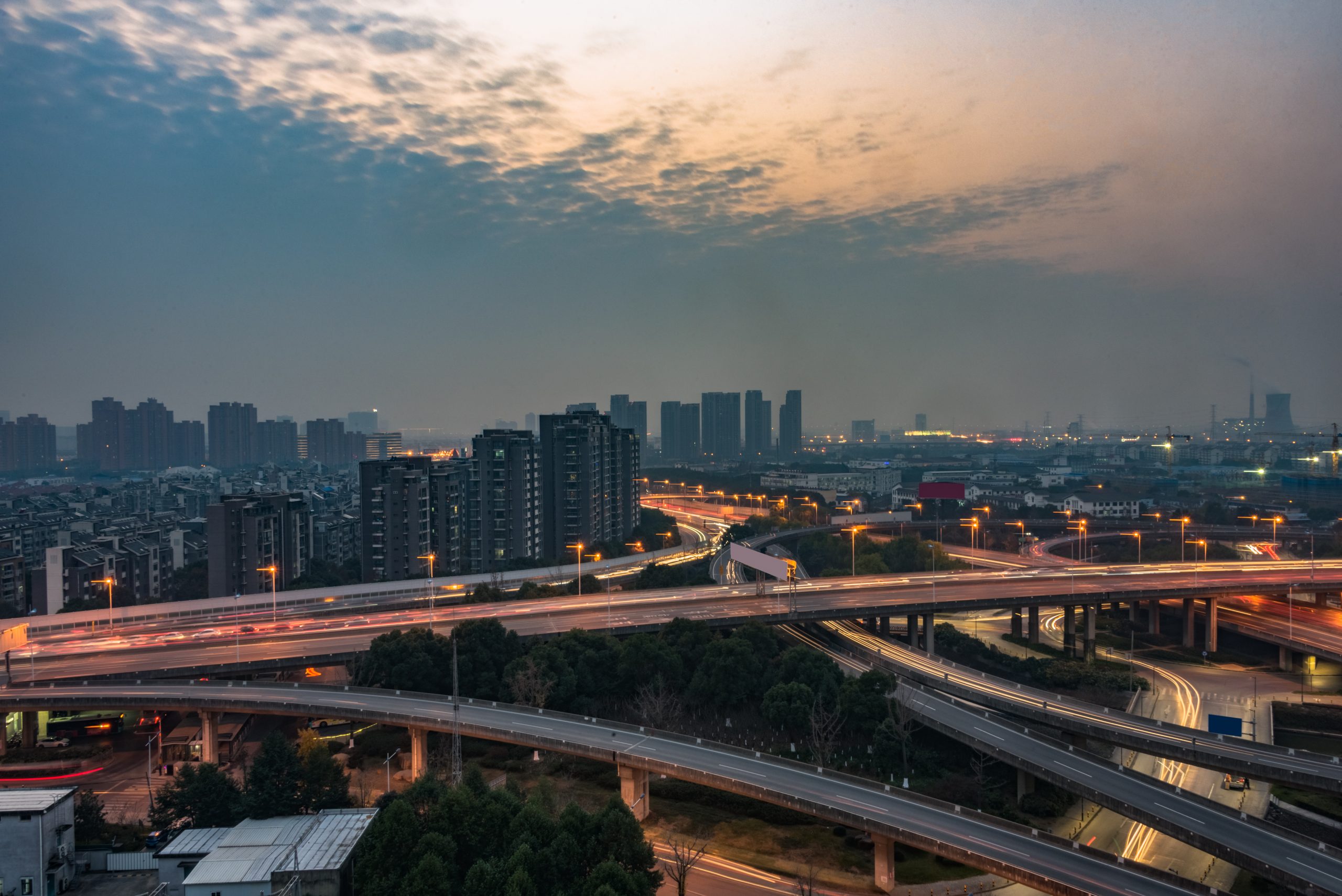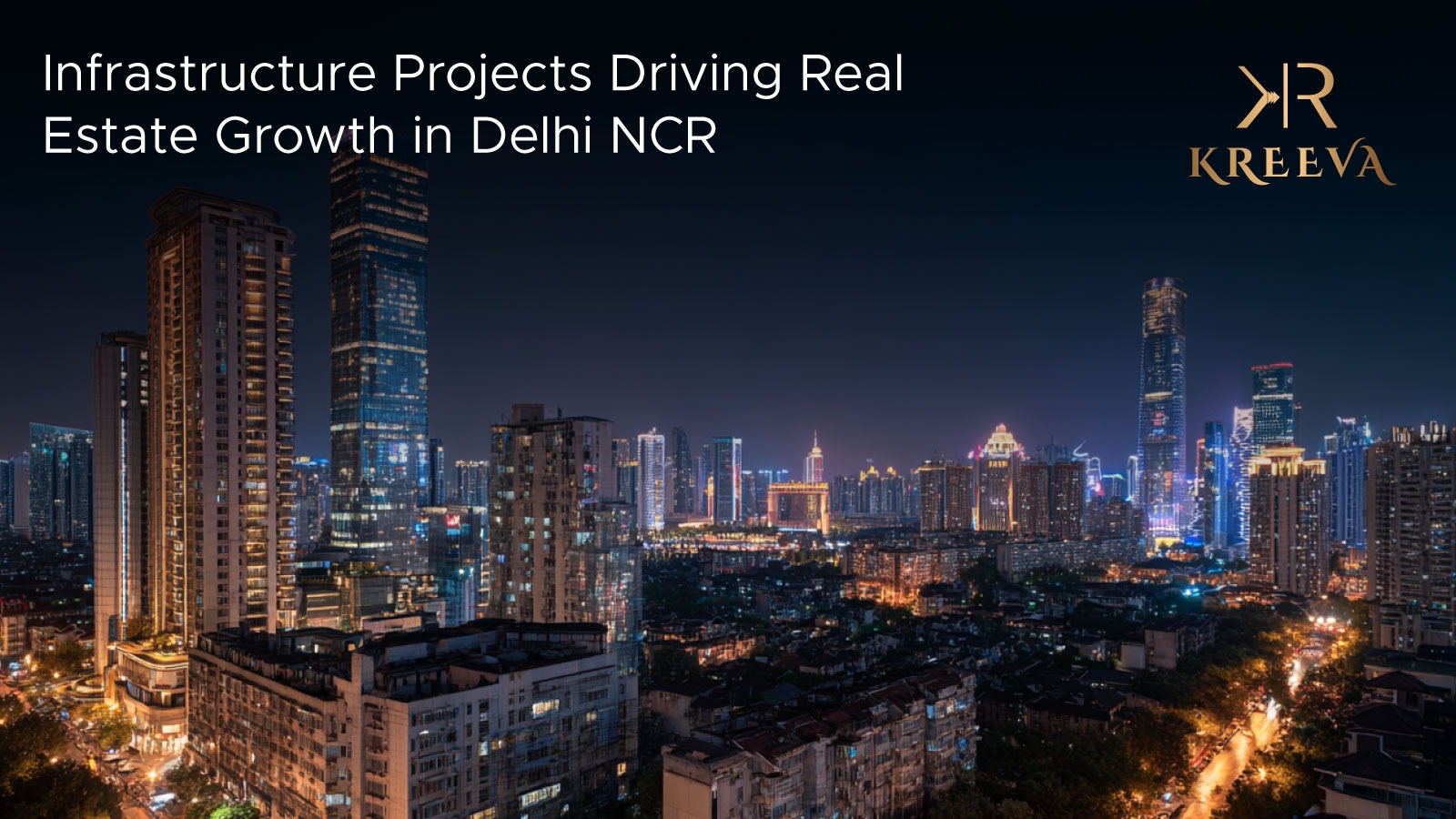The Delhi National Capital Region (NCR) is experiencing a significant transformation. This change is not accidental. It is the direct result of large-scale infrastructure development. These projects are creating a powerful ripple effect across the region’s property market. For investors, developers, and homebuyers, understanding this connection is key to making smart decisions. The real estate growth in Delhi NCR is directly tied to the expansion of its roads, metro lines, and airports.
This article examines the major infrastructure projects shaping the Delhi NCR real estate market. We will analyze how these developments increase property values, boost housing demand, and create new investment opportunities. We will cover the specific impact on both residential and commercial sectors and look at the future real estate trends in Delhi NCR 2025.
The Link Between Infrastructure and Real Estate Value
Strong infrastructure is the foundation of a healthy real estate market. New projects improve the value of an area in several clear ways. This process creates long-term property value appreciation in NCR.
Enhanced Connectivity Reduces Travel Time
Better connectivity is the most direct benefit of infrastructure development in Delhi NCR. New expressways, regional rail systems, and metro extensions reduce daily travel times. Areas that were once considered remote become accessible and attractive. This increased accessibility makes them prime locations for residential and commercial projects. As travel becomes easier, demand for property in these connected zones rises, pushing prices upward.
Economic Growth Creates Housing Demand
Major infrastructure projects attract businesses. Companies build offices, warehouses, and manufacturing units near these new transit corridors. This business activity creates thousands of jobs. The new workforce needs places to live, which directly increases the housing demand in Delhi NCR. This cycle of development and demand fuels a steady appreciation of property values.
Improved Urban Living Attracts Residents
Modern infrastructure goes beyond just transport. Smart city projects in Delhi NCR focus on improving the quality of life. These initiatives introduce better water supply, reliable power grids, efficient waste management, and digital connectivity. Such improvements make neighborhoods more desirable for families and professionals. People are willing to pay a premium for a home in a well-managed and modern environment. This is a principle KREEVA integrates into its projects, which are designed to be more than just homes—they are ecosystems of convenience and future-ready living.
Key Upcoming Infrastructure Projects in Delhi NCR
2. Urban Extension Road-II (UER-II) & Dwarka Expressway
UER-II is a 75.7 km six-lane expressway linking Alipur in North-West Delhi to Mahipalpur in the South-West, easing pressure on the Ring Road and NH-48. Alongside this, the newly inaugurated Dwarka Expressway connects Dwarka, Gurugram, and the airport corridor—dramatically cutting travel time between Delhi and Gurugram.
Impact on Real Estate: Peripheral areas like Dwarka, Sector 113–115 Gurugram, and Bahadurgarh are emerging as premium real estate hotspots, with residential and mixed-use projects rising along these corridors.
3. Noida International Airport (Jewar) & Yamuna Expressway Corridor
The upcoming Noida International Airport at Jewar is a game changer for NCR’s southern belt. With its first phase expected to begin commercial operations by 2025, the airport is already fueling massive real estate growth along the Yamuna Expressway.
According to Economic Times, apartment prices in this corridor have increased 158%, and plot values have jumped over 500% since 2020. Developers are launching large integrated townships and commercial zones to capitalize on this boom.
Impact on Real Estate: Jewar, Sector 22D, and YEIDA sectors are becoming the new investment frontiers, offering excellent long-term ROI potential.
4. Metro Expansion & Multi-Modal Integration
The Delhi Metro Phase IV project and new Noida Metro extensions are reshaping urban mobility. The Janakpuri–Krishna Park section, Aerocity–Tughlaqabad line, and Noida–Greater Noida West expansion will enhance inter-city and last-mile connectivity.
Moreover, RRTS and metro systems are being integrated at key junctions for seamless transit.
Impact on Real Estate: Micro-markets like Greater Noida West, Dwarka Mor, Noida Sector 62, and Tughlakabad are witnessing renewed housing demand due to improved accessibility.

Residential vs. Commercial Real Estate Expansion in NCR
The ongoing infrastructure boom affects both residential and commercial real estate, but in different ways.
Residential Sector Growth
The primary driver for the residential sector is improved livability and accessibility. Homebuyers are moving to newly connected peripheral areas to find larger homes at more affordable prices. Integrated townships that offer a complete lifestyle with schools, hospitals, and shopping centers are in high demand. The infrastructure push supports this trend by making these new townships viable options for daily commuters.
Commercial Sector Boom
For the commercial sector, connectivity equals efficiency. The new expressways and freight corridors are fueling a logistics and warehousing revolution. Companies are setting up large-scale facilities along these routes to optimize their supply chains. Additionally, the development of new urban centers along the RRTS and metro lines is creating demand for modern office spaces and retail centers outside the traditional business districts of Delhi and Gurugram. This trend points to a healthy future for commercial real estate expansion in NCR.
Future Outlook: Real Estate Trends in Delhi NCR 2025
Looking ahead, the current infrastructure projects will continue to shape the market. Investors and buyers can anticipate several key trends.
- Rise of Peripheral Hubs: Areas like Sohna, Panipat, Meerut, and the Yamuna Expressway region will transform from peripheral towns into self-sustaining economic hubs.
- Focus on Integrated Development: The demand for integrated developments that combine living, working, and recreation will grow. It’s a trend that visionary developers like KREEVA are already pioneering, understanding that modern luxury is about convenience and a holistic quality of life.
- Sustained Price Appreciation: Corridors directly served by new infrastructure will experience sustained property value appreciation in NCR. The growth will be most pronounced in micro-markets that offer a blend of connectivity and planned social infrastructure.
- Increased Foreign Investment: The scale and quality of infrastructure development in Delhi NCR are attracting global investors, bringing more capital and professionalism into the market.
Conclusion
The future of the Delhi NCR real estate market is being built today. The massive investment in infrastructure is not just about concrete and steel; it is about creating a more connected, efficient, and livable region. These projects are unlocking new areas for development, creating economic opportunities, and driving sustainable real estate growth in Delhi NCR.
For investors and homebuyers, the message is clear. The path of development follows the path of infrastructure. By understanding which projects will have the greatest impact, you can identify the next wave of growth. It is this strategic foresight that guides KREEVA’s selection of prime locations, ensuring our projects are not just homes for today, but appreciating assets for tomorrow.
FAQs
Improved infrastructure enhances connectivity, boosts employment, and attracts businesses, all of which increase housing demand and push up property prices.
Regions like Dwarka, Gurugram (Sectors 113–115), Noida Extension, Greater Noida, Ghaziabad, and the Yamuna Expressway corridor are experiencing rapid appreciation.
Jewar Airport is driving major growth along the Yamuna Expressway, attracting investors and developers. Property values have surged over 150% since 2020.
The RRTS cuts travel time between Delhi, Ghaziabad, and Meerut by over 60%, making these cities viable for daily commuters and encouraging residential and rental investments.
